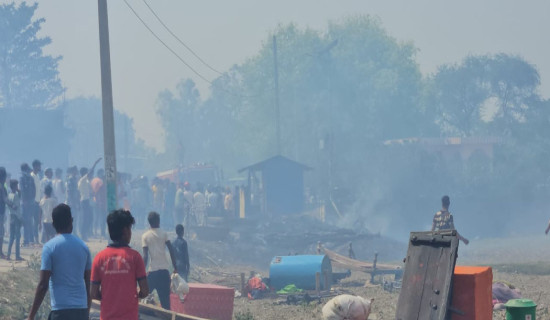- Thursday, 25 April 2024
Snakes' Role In Ecology
Having suitable habitats for snakes, Nepal is home to numerous species of legless reptiles. National parks, other protected areas and their corridors are the major habitats for snakes. They also live in bushes, farms, swamp meadows and riversides. A variety of venomous snake species such as King Cobra and Krait are mostly found in tropical and sub-tropical regions while numerous other species are sighted at places with altitudes of 3,500 to 4,000 metres above sea level. Though people have a negative perception towards snakes in general, these species, as stated by herpetologists, play an essential role in maintaining balance in the entire ecosystem. In fact, snakes can be both predator as well as prey in most ecosystems. The population of snakes increases in areas where there are preys in large numbers. And these snakes can be prey for many birds, mammals and even other snakes. The King Cobra, the longest venomous snake species in the world, is considered as a snake-eater.
Humans stand to reap the benefit from snakes in many ways. People get clean drinking water with the help of snakes as the latter are instrumental in cleaning up sources of water by eating rodents, toads and numerous other insects. In addition, snakes help farmers increase their agricultural yields as they kill rats in the farmlands. When there is sufficient quantity of food in an area, rats reproduce rapidly in the absence of predators. Experts say that snakes reduce rat population by 50 per cent. Thus, being predators, snakes keep prey populations in balance. If the population of rats is high, many residents resort to using chemical pesticides. This leads to massive environmental degradation. People can get an easy, environemnt-friendly, free and natural pest control service from snakes. So, it is necessary for humans to give up their misconception that snakes are harmful only. All snakes are not poisonous and perilous.
According to a news report published in this daily on Thursday, out of 84 recorded species of snakes in Nepal, 26 were found in and around the Bardiya National Park (BNP) and connected forest corridors. Five among the recorded snake species are venomous. They include two species of common Krait, two species of Russel’s Viper, and one species of King Cobra. Experts are happy that the King Cobra, which is a globally threatened species, has been recorded in Bardiya. This is really a positive indication that the snake conservation efforts being made in the BNP are paying off. Those species were recorded last year in the area. However, the country’s snake diversity is threatened by habitat degradation, nest damage, road killing, and haphazard killing. People still hold a mistaken view that all snakes are venomous.
It is notable that even the venomous snakes are very useful because their venom is utilised for producing different medicines as prescribed by the World Health Organisation (WHO). Although snakes are contributing to preserving the environment, saving food crops from rodents and other pests and producing medicines, the country does not seem to have given much priority to their protection. However, the problem of snakebite becomes rampant in different parts of the country, especially in the Terai region, during the hot season. As many as 20,000 snakebites are recorded across the nation annually. Of the total victims of snakebite, around 1,000 die every year. It is imperative for local governments and other relevant authorities to create public awareness about the significance of preserving snakes and how to avoid snakebites.

















